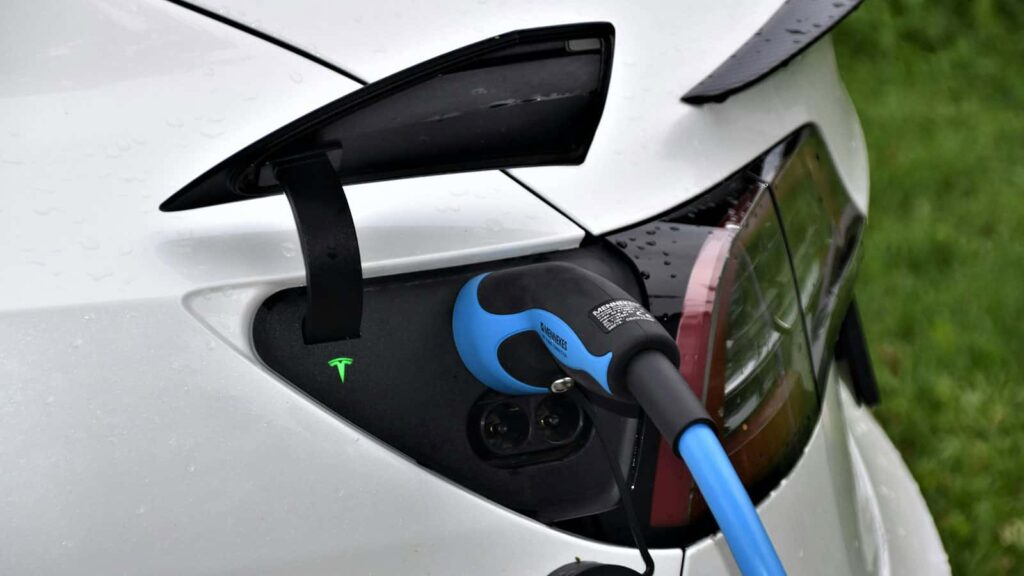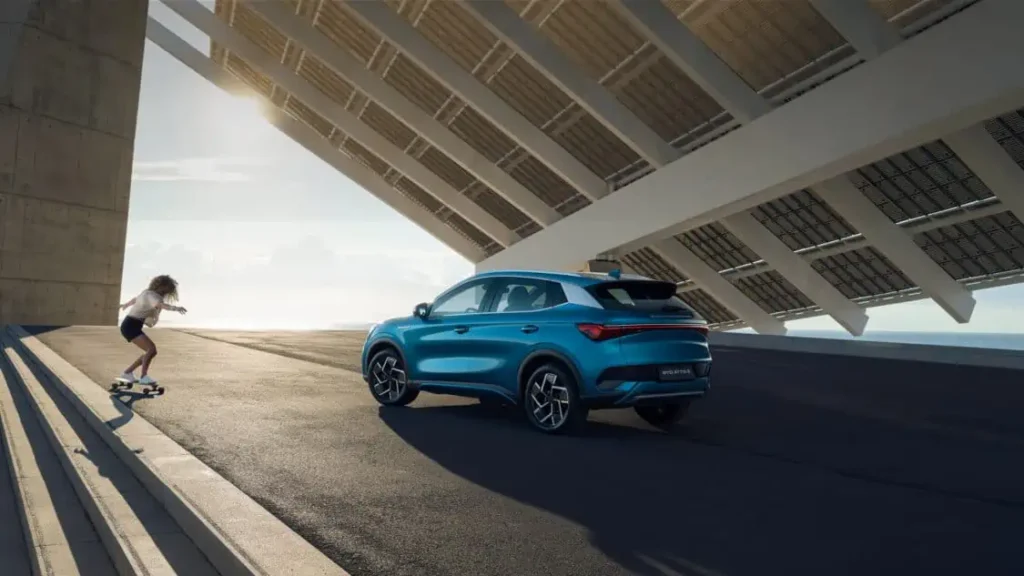31 Countries Passed the 5% EV Tipping Point to Mass Adoption in Q4
New technology can tend to seemingly take over the world overnight. It wasn’t long after the release of smartphones that nearly everyone had one. The EV tipping point is another example of unbelievably fast adoption.
Bloomberg recently reported on electric vehicles catching up to internal combustion engine (ICE) sales at an astounding rate globally in Q4 of 2023. The transition is happening much faster than anyone ever imagined.
Once 5% of a Country’s New-Car Sales Go Fully Electric, Everything Changes
Bloomberg describes passing the 5% of new-car sales as the “tipping point,” and EV sales have now passed this tipping point in 31 countries, according to the report. This threshold of passing 5% signals the start of mass adoption of EVs, after which preferences for the innovative vehicles rapidly increase over their traditional, gas-powered ICE alternatives.
Bloomberg reported on the same topic in 2022, when a mere 19 countries had passed the 5% tipping point. This increase showed how EVs can surge from 5% to 25% of new cars in under four years in many countries.

The S-Shaped Adoption Curve
The tipping point is evident when examining the S-shaped EV adoption curve, which is commonly reported on with new technology such as smartphones and electric vehicles. Sales are slow during the early adopter phase, but once initial barriers such as cost are overcome, sales hook into a wave of mainstream acceptance.
“Once enough sales occur, you kind of have a virtuous cycle,” said Corey Cantor, an EV analyst at BloombergNEF. “More EVs popping up means more people seeing them as mainstream, automakers more willing to invest in the market, and the charging infrastructure expanding on a good trajectory.”
Global EV Tipping Point in 2021
When looking at EV adoption across the entire planet, the 5% EV tipping point was crossed in 2021.
Turkey serves as an example of lighting-fast EV adoption globally. Turkey barely had any EV adoption a year ago. The Turkish EV company Togg released its first battery-powered car, the T10X.
Sales of the Togg EV went off the rails. Turkey crossed the 5% tipping point in the third quarter, and by Q4, it was the fourth-largest EV market in Europe.
If the U.S. Catches On to This Global Trend, a Quarter of Its New Cars Could Be Fully Electric in 2026
Experts predict EV prices in the United States will drop significantly very soon, and the EV explosion will happen in less than two years from now. The reason for this is the price pressure from China; for example, BYD’s Seagull, at under $10K for a new EV, is taking the world by storm.
Whether or not China enters the U.S. EV market, EV prices in America will drop sharply very soon because of BYD and other Chinese competitors, who have already achieved huge price drops.
This is because all OEMs must compete globally, and the U.S. is only a small part of the global automotive market. Market pressure will drive U.S. EV prices down fast. Rapid declines in lithium prices and battery costs add to this trajectory.

Barriers to EV Adoption in the U.S.
In addition to price, the other reason EVs haven’t taken over yet for ICE vehicles in the United States is a variety of barriers. Lack of charging availability, reliability issues, connector compatibility issues, and lack of multifamily charging are some of the barriers. All are currently being solved.
Charging availability is the biggest barrier and the barrier that is getting solved most quickly. A powerful combination of billions in federal funding is combined with strong investments from the private sector. The EV charging industry in the United States is absolutely booming, and is referred to as the new “gold rush.”
As Countries Adopt EVs More Quickly, the U.S. Will Respond to Pressure
The U.S. can’t keep holding onto ICE vehicle use and continue to try to ignore the EV tipping point that’s happening globally. The reason for this is that the automotive industry is important to the American economy. If companies such as Ford and GM can’t catch up and be competitive globally on the EV front, there will be serious economic trouble.
Both Ford and GM are seeking partnerships with Chinese EV battery manufacturer CATL, which is one step toward increased EV production, using a loophole in the Inflation Reduction Act.
However, the partnerships are controversial due to tensions between the U.S. and China, as well as the current EV trade barriers. The U.S. government may shoot down these partnerships as they would benefit Chinese company CATL. The IRA contains rules disallowing China and other “Foreign Entities of Concern” from benefiting from the EV tax credit of up to $7,500.

Electric Vehicle Marketing Consultant, Writer and Editor. Publisher EVinfo.net.
Services